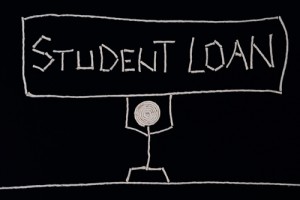1,2,3’s of Stafford Loans 
Stafford loans may be a great option to help pay for your education.
Education, of any kind, nurtures our minds and shapes our future and our society. Every single student aims to do and achieve something big in his/her life and that’s where the role of higher education comes into play. Higher education is perceived as extremely important since it forms the base of our career and future ahead. It equips us with sound knowledge, skills and helps us to develop a career niche. No qualified, determined and motivated student should miss out on an opportunity of gaining knowledge to study at a desired institute because of cost issues. So as to finance higher education of students, the Government of the United States of America provides student loans called Federal Stafford Loans. All those undergraduate and graduate students enrolled in university/college and attending the same at least half-time are eligible for this loan. It covers all the expenses related to education including tuitions cost, books, room and board and other appropriate expenses. Stafford loans are available to students through Federal Direct Student Loan Program (FDSLP), also known as ‘Direct’. The U.S. Department of Education maintains a central database for student aid named The National Student Loan Data System (www.nsdls.ed.gov) wherein it receives and stores data from schools, Direct Loan Program and other departments. The government offers this loan at lower fixed interest rates than any other private student loans.
Eligibility of Stafford Loan
The pre-requirement to obtain a Federal Direct Stafford loan is that the student (a U.S. citizen or national, a U.S. permanent resident or eligible non-citizen enrolled in a school that participates in ‘FDSLP’) must complete the Free Application for Federal Student Aid (FAFSA). One major plus of this loan policy is that it is not credit based. Thus, the borrower’s credit history or whether they are credit-worthy is not looked upon. Stafford Loans are available in subsidized as well as unsubsidized form to undergraduate students, whereas, graduates and professional students can only get an unsubsidized loan.
Repayment of Stafford Loan
While the student is still enrolled as full or half-time student, they do not have to bother with repayment of this loan. Six months after the student graduates or drops below half-time they’ll need to opt a repayment plan among several plans offered by the Federal Stafford Loans.
Standard Repayment:
Fixed level monthly payment for a term up to 10 years.
Graduated Repayment:
Monthly payments that starts at low rate and keeps increasing every two years, extended to a term of 10 to 30 years.
Income based repayment:
Cap of monthly loan payments based on discretionary income of the borrower. It may change each year depending on his income and financial hardship faced by him. An income based repayment calculator (IBR calculator) can be used to determine if one is eligible for this plan. Direct Loans login website (www.direct.ed.gov) provides different such student loan repayment calculators.
Extended Repayment:
Fixed monthly payments to be made for terms of 10 to 30 years.
If the borrower faces some trouble in repaying the loan, then he can opt for changing the repayment plan. The Direct Loan Program also provides for deferment or forbearance of payment of such loans. There are also loan forgiveness or discharge programs for various occupations such as health professionals, teachers (Teacher Loan Forgiveness Program), volunteer work, military service and public interest law.
The entire purpose of this flexible student loan policy is to provide great financial assistance to the scholars of the country so that they can achieve their goals.
 Follow
Follow